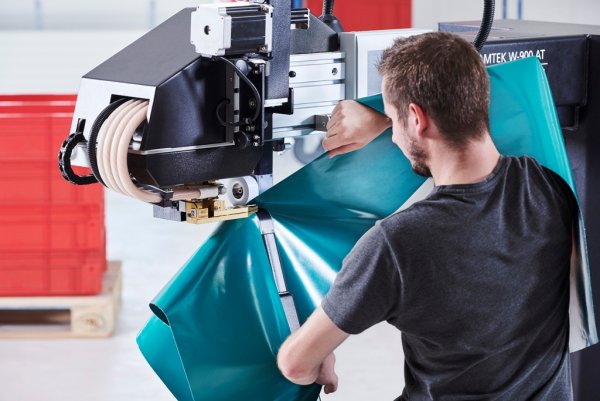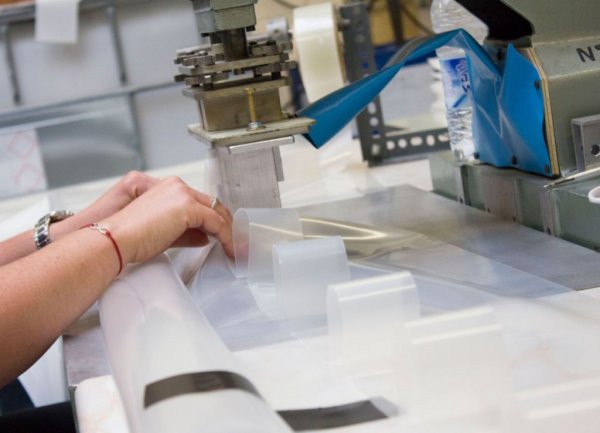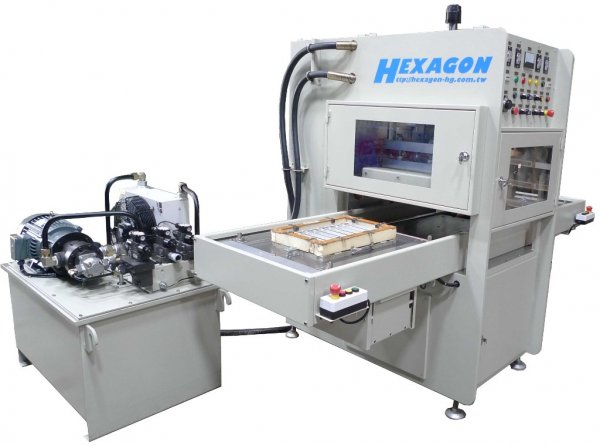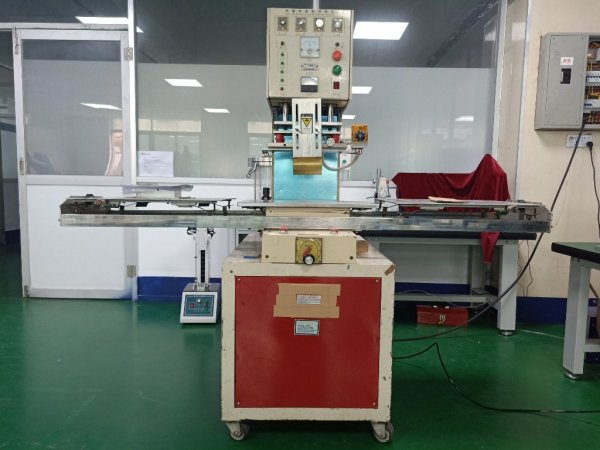Dielectric heating of thermoplastic materials, high frequency welding
Dielectric heating of thermoplastic materials is mainly used for joining (welding) individual parts in the production of various products from these materials.
The welding process takes place as a result of heating in a high-frequency electric field to the melting temperature of a part of the material located under the electrodes of the working capacitor, to which the corresponding pressure is applied.
Such welding is applied both to elastic foils and to solid materials in the form of sheets, pipes, etc. Using high-frequency welding, various technical products, protective packaging, clothing, containers, as well as consumer goods (folders, wallets, boxes, bags, raincoats, etc.).
With electric field frequency up to 40 — 50 MHz due to the use of dielectric heating easily weldable materials such as polyvinyl chloride, vinyl plastic, vinyl rose and others with a dielectric loss tangent of the order of 10-2... The welding time, depending on the type of material, the size of the products to be welded and the power of the installation, varies tenths to units of a second.
There are two main methods of high-frequency welding: continuous-sequential and simultaneous.
In the continuous sequential method, the working capacitor consists of two rotating rollers between which the material to be welded moves.
One of the rollers is leading and is connected to an electric drive. The second, with a high potential, is isolated from the body of the plant by a low-loss dielectric. The pressure on the material is transmitted through the upper roller by the spring.
Productivity with this welding method does not exceed 5 m / min. To increase performance, they use designs of a working capacitor, the characteristic feature of which is the presence of a closed metal strip moving along with the material.
In such designs, the length of the contact line of the electrodes with the material can be chosen arbitrarily large, and the welding speed is practically unlimited. The material to be welded can be pulled from the electrode system itself.
In the simultaneous method, the electrodes of the working capacitor, made in the form of matrices repeating the required configuration of the seam, are installed in the press.
For butt welding of cast vinyl plastic pipes, a working capacitor in the form of two pairs of half rings of non-ferrous metals is used.A split sheath made of low-loss insulating material is inserted inside the tube, preventing the formation of protrusions and roughness on the inner surface of the tube during the welding process.
High frequency welding machine (cut-off welding machine)
The welding tray is suitable for welding and cutting materials containing non-woven fabrics, other fabrics and textiles or leather goods. This allows the cut material to be cut immediately after welding.
The operator first places the welding material on the moving table, and then the moving table is moved to the welding pressing area. This design ensures the safety of the operators.
Another common application is blister welding. The sliding tray cutting machine can weld the blister to the cardboard and then cut the blister. This type of machine is also often used in the production of sports shoes.
Straight line electrodes are used for butt welding of flat sheets. The welded sheets are placed on a solid base. An elastic insulating gasket is placed between the electrodes and the sheets above the joint, which limits the height of the joint and improves its shape.
Pressure is applied to the electrodes in a direction perpendicular to the plane of the sheets. The heated material is pressed into the space between the electrodes, forming a thickened seam.
Press welding provides high productivity with high quality welds. Presses are foot operated, pneumatic or hydraulic. Structurally, they are implemented:
-
with a residual gap that provides a predetermined final seam thickness; in this case, the pressure on the weld seam during the welding process changes from the maximum value to 0;
-
with constant pressure throughout the welding period;
-
with two pressure levels: at low pressure, the material is heated until melting, after which the heating stops and the pressure is increased.
The forces in the press, depending on the power of the welding installation, vary from several kilograms to several tons. The high-frequency welding voltage is applied to the working capacitor of the generator with a capacity of several hundred watts to tens of kilowatts to weld seams with an area of units to hundreds of cm2.
See also:Physical basis of methods for high frequency heating of dielectrics




